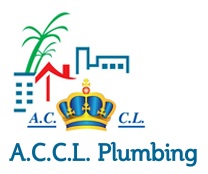A well-designed plumbing system is crucial for any building, providing safe and reliable access to water and sanitation. Whether you’re designing a new building or renovating an existing one, a thoughtful plumbing system design can help reduce water consumption, prevent leaks, and ensure the health and safety of occupants. In this article, we’ll explore the key considerations for designing an efficient and safe plumbing system.
Understanding Your Water Needs
Before designing a plumbing system, it’s essential to understand the water needs of the building. Consider the following factors:
1. Water pressure: Ensure the water pressure is sufficient to meet the needs of the building’s fixtures and appliances.
2. Water flow rate: Calculate the water flow rate required for each fixture and appliance to ensure the system can meet peak demand.
3. Water quality: Consider the quality of the water supply and whether treatment or filtration systems are necessary.
Design Considerations
1. Pipe sizing: Choose pipes that are the correct size for the water flow rate and pressure requirements of the system.
2. Pipe material: Select pipes that are durable, resistant to corrosion, and suitable for the water quality and temperature.
3. Layout and configuration: Design the plumbing system to minimize pipe runs, reduce fittings and valves, and ensure easy access for maintenance.
4. Water efficiency: Incorporate water-efficient fixtures and appliances to reduce water consumption and minimize waste.
5. Drainage and venting: Ensure the drainage system is designed to prevent siphoning and backflow, and provide adequate venting to prevent siphoning and trap depletion.
Safety Considerations
1. Backflow prevention: Install backflow preventers to prevent contaminated water from entering the potable water supply.
2. Scald protection: Install thermostatic mixing valves or anti-scald devices to prevent scalding from hot water.
3. Leak detection: Consider installing leak detection systems to identify potential leaks and prevent water damage.
Best Practices
1. Follow local codes and regulations: Ensure the plumbing system design meets or exceeds local building codes and regulations.
2. Use high-quality materials: Choose materials that are durable, resistant to corrosion, and suitable for the water quality and temperature.
3. Test and commission: Test the plumbing system thoroughly before occupancy to ensure it’s functioning correctly and safely.
Benefits of a Well-Designed Plumbing System
1. Water conservation: A well-designed plumbing system can help reduce water consumption and minimize waste.
2. Energy efficiency: A efficient plumbing system can also reduce energy consumption by minimizing the amount of energy required to heat and pump water.
3. Safety and health: A safe and well-designed plumbing system can help prevent waterborne illnesses and injuries.
4. Cost savings: A well-designed plumbing system can also help reduce maintenance and repair costs over the life of the building.
Conclusion
Designing a plumbing system requires careful consideration of water needs, pipe sizing, and safety features. By following best practices and incorporating water-efficient fixtures and appliances, you can create a plumbing system that is both efficient and safe. Whether you’re designing a new building or renovating an existing one, a well-designed plumbing system is essential for ensuring the health and safety of occupants and reducing water consumption.

